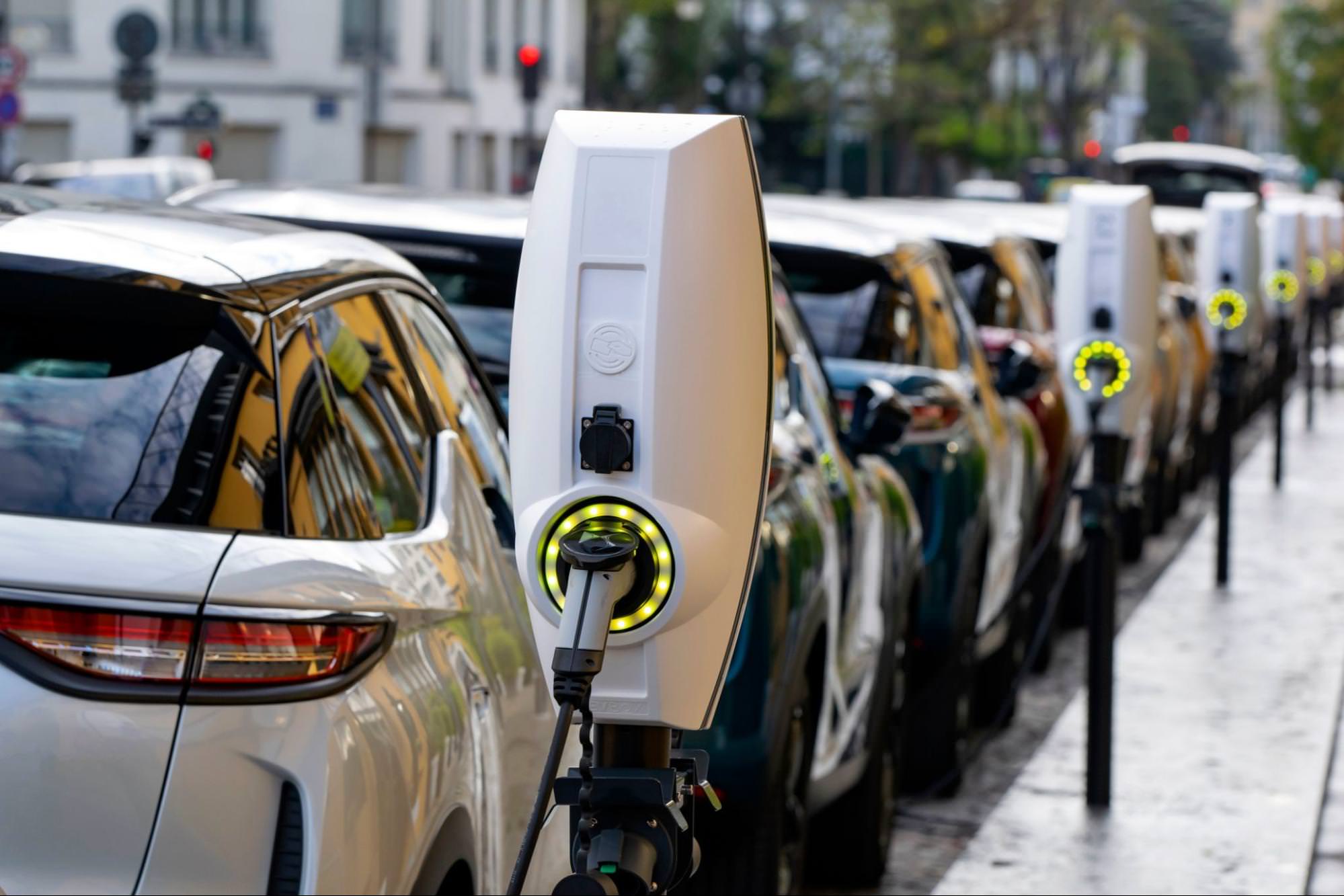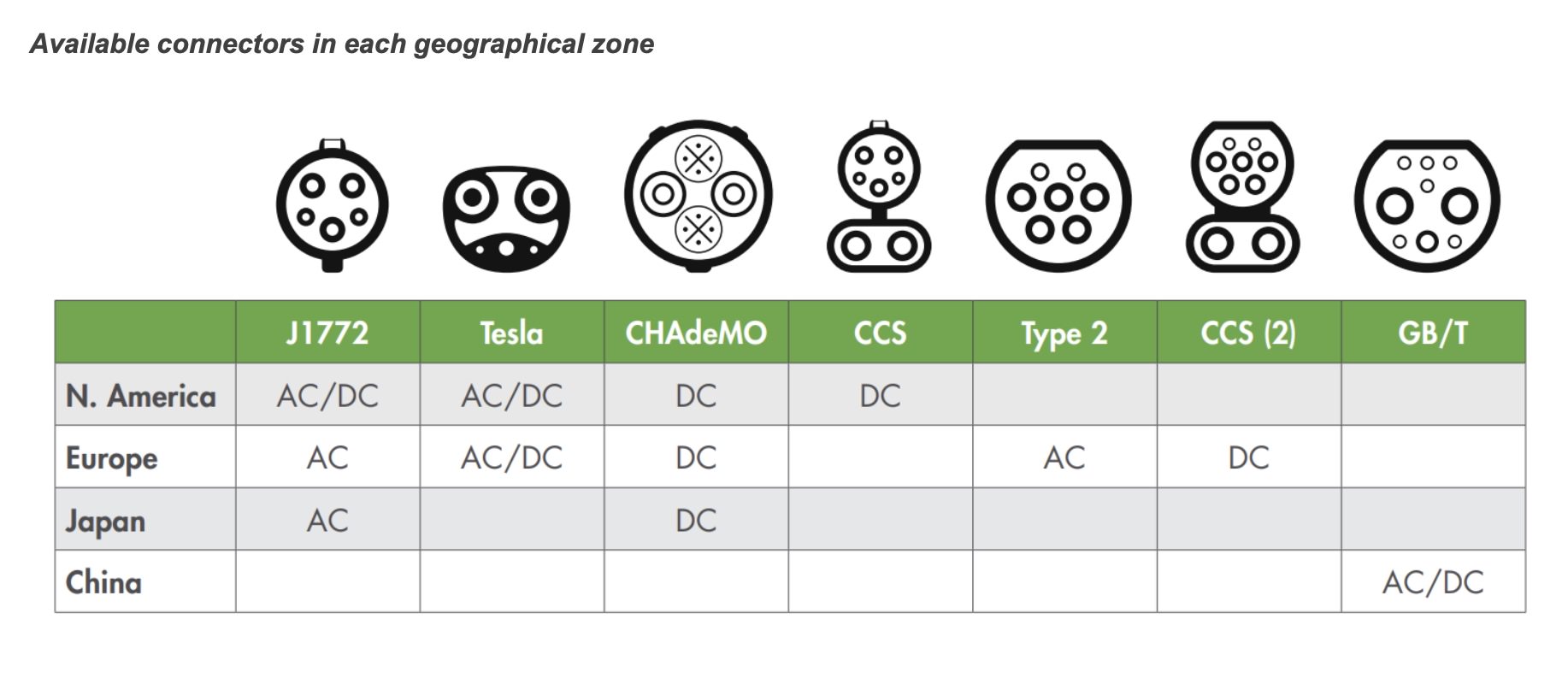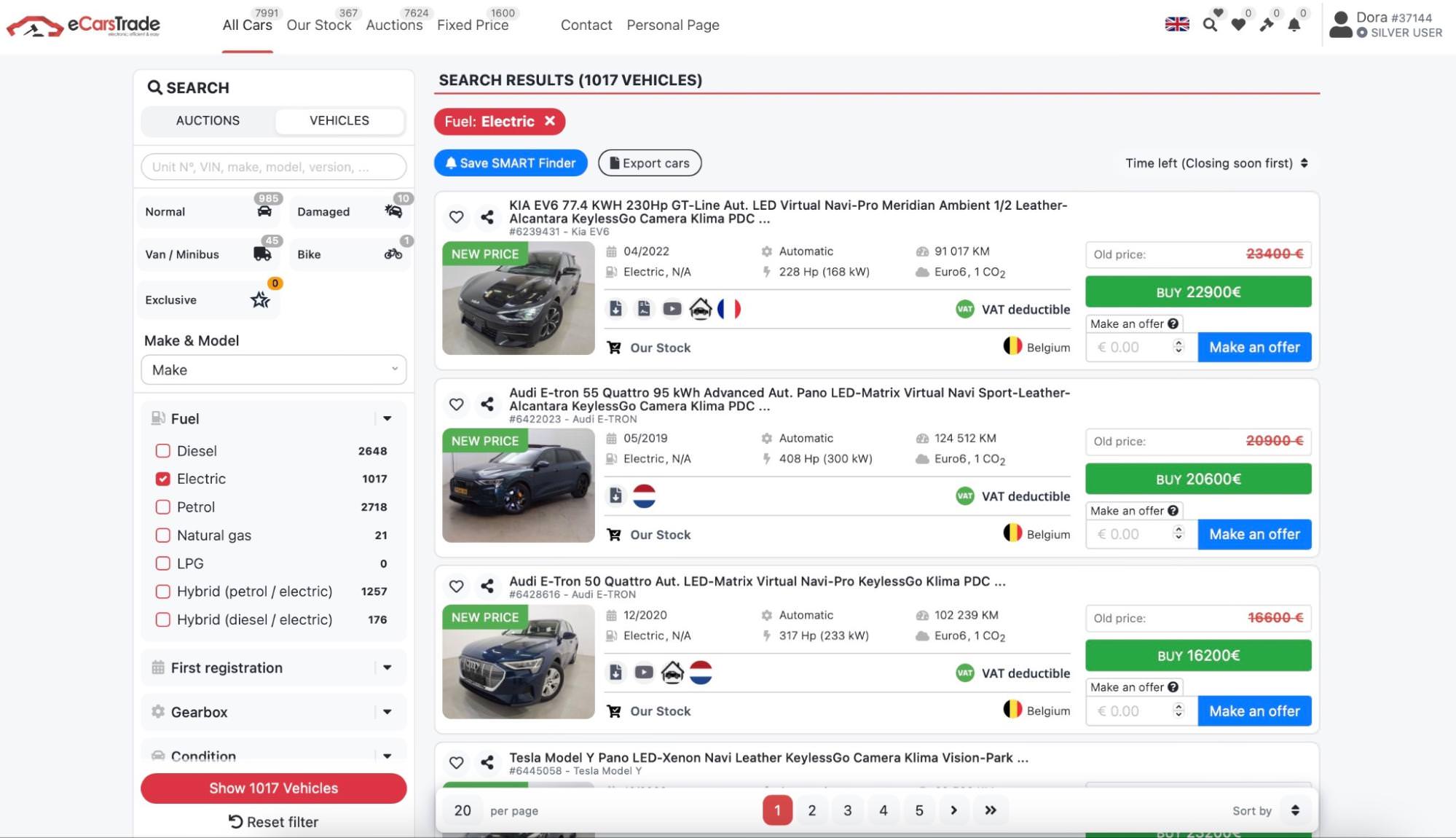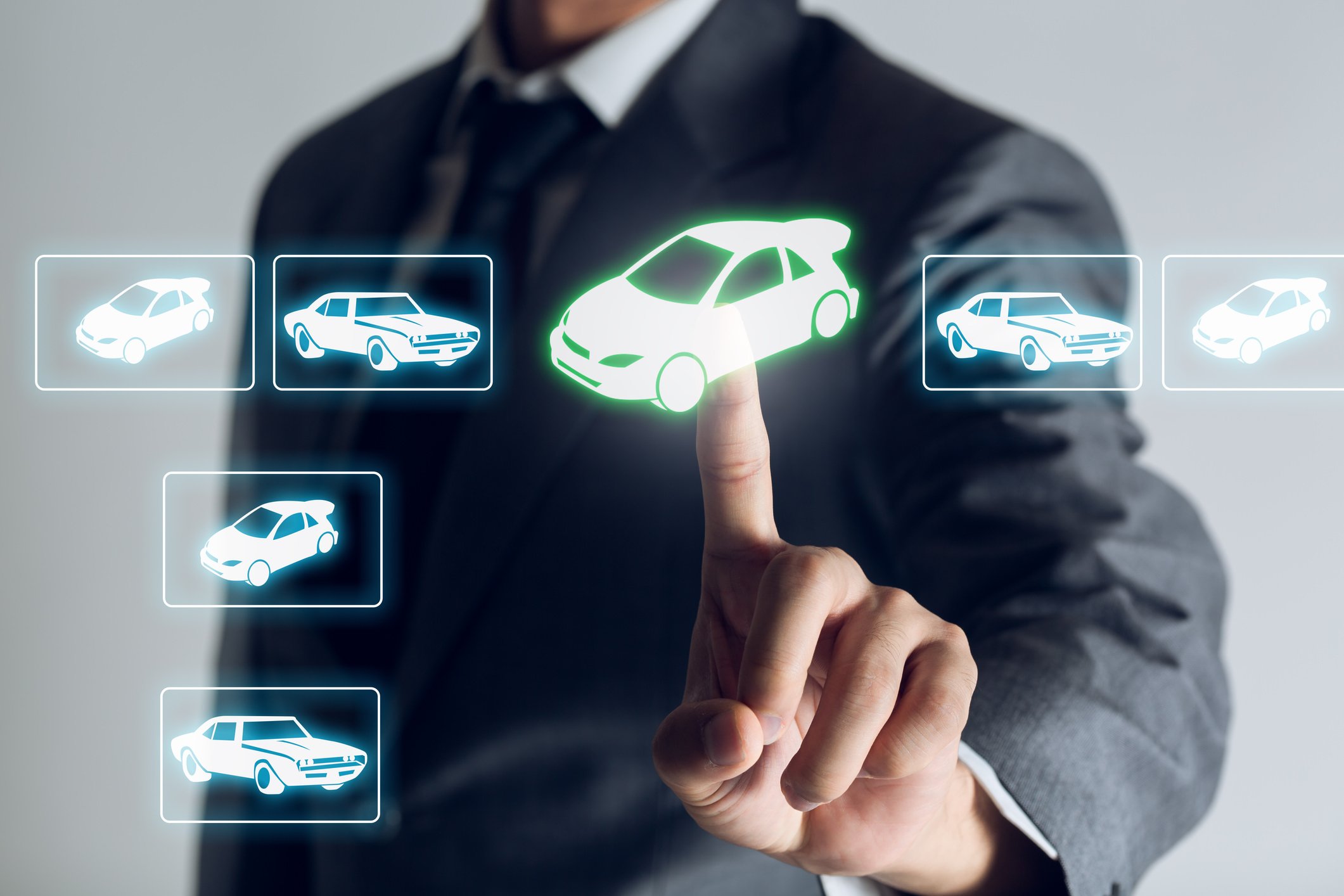- Blog
- EV Charging Standards and Compatibility Across the EU
EV Charging Standards and Compatibility Across the EU
Get a clear overview of Europe’s EV charging: Type 2 vs CCS2, AFIR categories, and dealer tips to choose stock and answer buyer questions.

If you’ve ever had a potential buyer hesitate over an electric car, charging was probably part of the reason. The good news is that charging is now easier to handle than it used to be.
Europe now has a clear EV charging standard, and most public stations use a Type 2 charging point for AC and CCS2 for DC fast charging, so compatibility is easy to explain and easier to sell.
In this guide, you’ll learn about the different EV charging plugs and the key EU rules dealers should know, which will help you answer questions about charging and sell more EVs.
Let’s start with the main EV standards used across Europe.
EV charging standards in Europe
With the rising adoption of EVs in Europe, charging compatibility has become increasingly important. Fortunately, Europe’s electric vehicle charging infrastructure is now largely standardised, making life easier for drivers.
The EU EV charging standard defines two main plug types:
- Type 2 for AC charging
- CCS2 for DC fast charging
A few older or imported models still use CHAdeMO or other regional plugs, but those are becoming rare in EU markets.
Here’s a quick overview of the different types of EV charging plugs you’ll encounter across Europe:
|
Standard name |
Type |
Max power |
Compatible brands |
Common in EU infrastructure? |
|
Type 2 (Mennekes) |
AC |
Up to ~22 kW public |
Most European EVs (VW, BMW, Renault, Peugeot, etc.) |
Yes. This is the standard AC plug across EU public stations. |
|
CCS2 (Combined Charging System 2) |
DC and AC |
Up to ~350 kW (ultra-fast) |
Most new EVs in Europe including Tesla Europe variants |
Yes. This is the predominant DC plug in the EU. |
|
CHAdeMO |
DC |
Up to ~100 kW |
Some older Japanese cars (like Nissan Leaf) |
Declining. It’s being phased out in many EU markets. |
|
Type 1 (SAE J1772) |
AC |
Up to ~7-22 kW |
Older cars from US and Japan |
No. It’s rare in the EU infrastructure, and most cars need an adapter to use it. |
How many types of EV charging plugs are there in Europe?
Essentially, you’ll meet the three main plug types: Type 2, CCS2, and CHAdeMO.
A few older plugs (like J1772) can show up on imports, but they’re uncommon in EU infrastructure.
Also, you may notice that the European Alternative Fuels Observatory lists “Tesla” as a connector. That’s because Tesla launched before a single EU standard existed and used a proprietary plug.

Image source: European Alternative Fuels Observatory
In Europe today, Tesla cars use CCS2 (and older Teslas can charge via CCS2 adapters), so there’s no separate “Tesla-only” plug to worry about in the EU.
What is AFIR?
As we’ve seen, charging is now largely standardized across Europe, and that’s mostly thanks to AFIR, the Alternative Fuels Infrastructure Regulation.
AFIR makes public charging simpler because it sets the same plug standards and transparent pricing across all member states.
It also requires every country to expand coverage on major roads, so EVs can travel smoothly across borders.
But perhaps the most relevant part of AFIR for car traders is how it defines charging power categories, which we’ll now look at.
AFIR power level categories - official definitions
AFIR, as shown by the European Alternative Fuels Observatory, groups public recharging points into two main categories based on the type of current and power output.
|
Category |
Current type |
Power range |
|
Category 1 (AC) |
Alternating current |
|
|
Category 2 (DC) |
Direct current |
|
Now that you know how the EU officially classifies charging power, and what plug types there are, let’s look into each plug and standard in more detail.
CCS2 - The EU Standard
This is the official EU EV charging standard for DC fast charging. It combines the regular Type 2 AC connector with two extra DC pins, so it can handle both slow AC and high-power DC charging.
Which vehicles use the CCS2 standard?
Almost every modern EV sold in Europe supports CCS2, including models from Volkswagen, Audi, BMW, Mercedes-Benz, Hyundai, Kia, Peugeot, Opel, Tesla (Model 3 and Y), and more.
ISO 15118 and Plug & Charge technology
A key feature of CCS2 is support for ISO 15118, the communication protocol behind Plug & Charge. This is a feature where the car and charger automatically identify each other.
You just plug in, and charging starts right away (if both the vehicle and station support it). It’s already supported by many new EVs and charging networks, and we expect it to become common across Europe in the next few years.
Charging infrastructure availability across EU countries
CCS2 chargers now make up over 80% of new DC installations in the EU, so EV owners can charge their vehicles almost everywhere in Europe using this standard.
Type 2 charging point - AC charging standard
The Type 2 connector, also called the Mennekes plug, is the EU standard for AC charging.
Type 2 chargers are slower than DC, but they’re everywhere, which makes them good for overnight and destination charging.
Which vehicles use the Type 2 standard?
Every European-made EV supports Type 2 for AC charging, including Volkswagen, BMW, Renault, Mercedes-Benz, Volvo, Peugeot, and Tesla.
Cars imported from other regions often include a Type 2 socket in their EU versions or come with an adapter, so they can still charge at public EV charging stations across Europe.
CHAdeMO - Japanese standard
CHAdeMO was once the main DC fast-charging standard for Japanese EVs, but it’s now gradually disappearing in Europe as most new models switch to CCS2.
Which vehicles still use the Japanese standard?
You’ll mainly see CHAdeMO on older Nissan Leaf models, the Mitsubishi Outlander PHEV, and some older used Japanese imports.
Declining popularity of CHAdeMO and what it means for your stock
So, could the declining popularity of CHAdeMO chargers affect your stock? Well, it could!
Because most new public chargers and EV models now use CCS2, CHAdeMO cars can be harder to resell in EU markets.
They still work well, but charging options are fewer, and many buyers prefer cars with CCS2 for convenience.
If you trade used EVs, it’s best to highlight CHAdeMO clearly in listings so buyers are aware of its charging limits and can check local charging options before buying.
Tesla connectors in 2025
Tesla initially built its own connector and Supercharger network before EU standards existed.
In Europe, newer Tesla models (Model 3, Y, and later S/X) use CCS2, while older Teslas charge via a CCS2 adapter.
Supercharger stations are also being upgraded with CCS2 plugs and opened to other brands, meaning there’s no “Tesla-only” connector in the EU anymore.
Must-have knowledge for used EV dealers in the EU
So, what does all of this mean for you in practice?
Essentially, knowing which EVs to stock starts with a quick check of their charging setup. When sourcing EVs, always check:
- Charging port type (Type 2, CCS2, or CHAdeMO)
- Maximum AC and DC charging power, it’s listed in the car specifications
- Charging cables included (some used cars are sold without cables)
As of now, EV battery passports aren’t something to worry about yet.
But from 2027, all EV and industrial batteries over 2 kWh will need to have a digital battery passport, so that will be a document to explain to buyers as part of the vehicle history.
Customer education
And when it comes to how customers view charging, sharing a few simple tips can make their move to an EV much smoother.
When selling, clearly explain where and how a buyer can charge their EV. For example, you could show them public charging stations like Chargemap.
It also helps to address battery health and degradation early. Explain that fast charging is great for long trips, but most drivers use regular charging day-to-day, which is gentler on the battery.
Compatibility issues + solutions
As we’ve seen, charging is mostly standardized, but some differences still remain. That’s why you should watch out for the following compatibility issues:
- CHAdeMO cars: These are still functional, but there are fewer fast chargers. You can mention adapters, but remind buyers these are for AC only and won’t enable DC fast charging.
- Non-EU imports (US or Japanese): They often use Type 1 (J1772) for AC and require an adapter for European Type 2 sockets.
To sum up, choosing EVs with Type 2 and CCS2 ports makes charging (and selling EVs!) simple.
Best used EVs to offer your customers
Now that you can answer the key questions buyers might have about plug types and compatibility, it’s time to choose stock for your dealership.
Whether you’re looking for models with the longest range or high-demand EVs, you can find plenty of options on eCarsTrade.
Start by turning on the Fuel: Electric filter on eCarsTrade. You’ll then see the full list of electric vehicles currently available.

With an overview of details like charging power, battery size, and whether the car is VAT-deductible, you can scan listings fast and pick the EVs that suit your dealership.
FAQ
► Can I charge a CHAdeMO car at a CCS station?
No, not directly. You’d need a CHAdeMO-compatible charger. Also, adapters only work for AC, not DC.
► Do all EVs in Europe use the same charger?
Almost all new ones do. Most use CCS2 for DC and Type 2 for AC.
► How do I know what charging standard my car has?
Check the charging port shape or the owner’s manual or the car’s technical specifications.
► Are adapters reliable for long-term use?
AC adapters (Type 1 to Type 2) are reliable for long-term use, but DC adapters are rare and not officially supported by most car brands.
► Will CHAdeMO infrastructure disappear completely?
No, but it’s shrinking. Most new chargers and cars in Europe are CCS2-based, so expect fewer CHAdeMO points over time.
eCarsTrade oferuje internetowe aukcje samochodowe samochodów poleasingowych z Europy!

